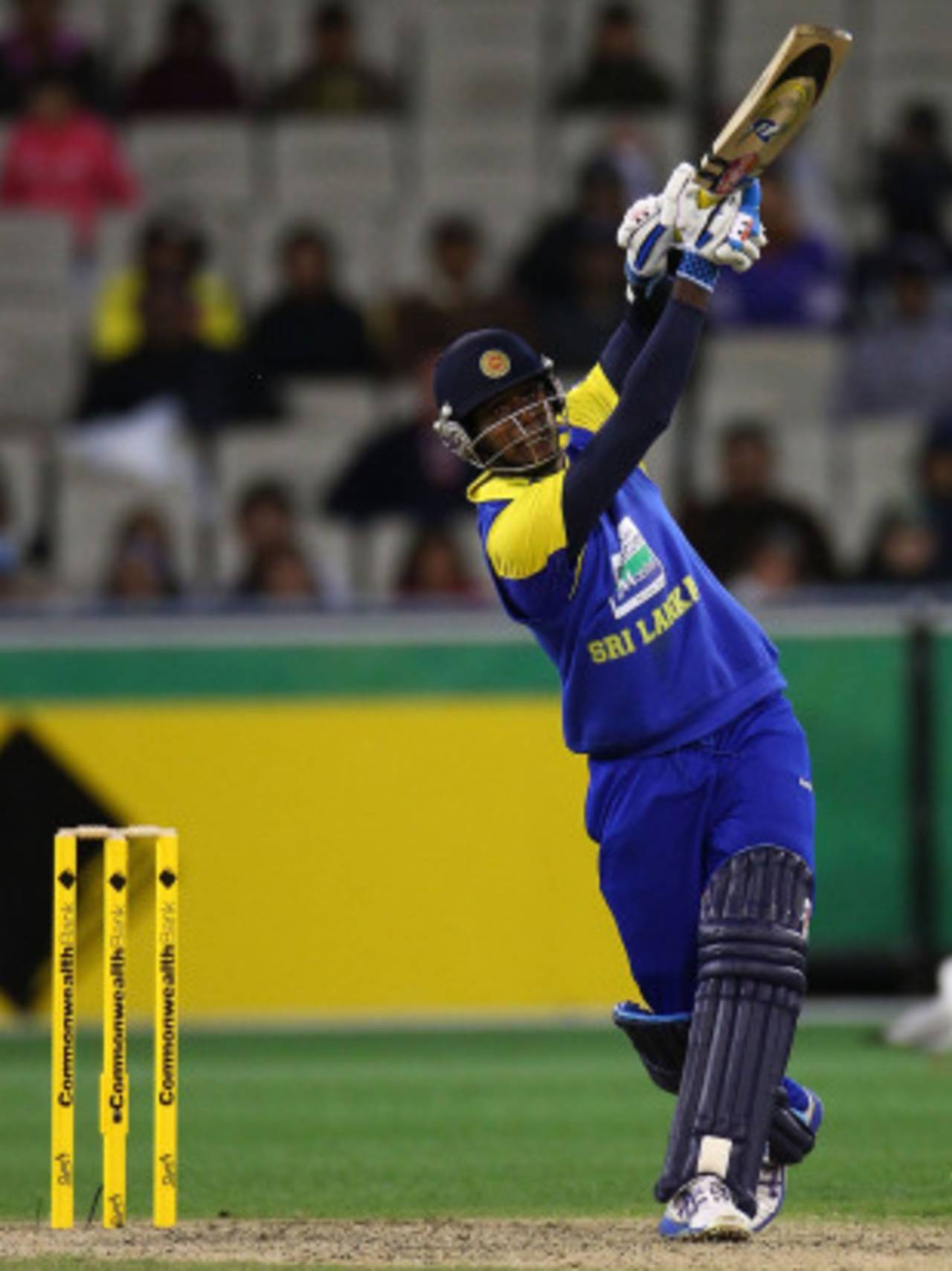Ruling the middle kingdom
A smartly executed mid-innings Powerplay could become this World Cup's key tactical offering
Martin Crowe
20-Feb-2011

Angelo Mathews could become the Jayasuriya of 1996. Only, after the first 15 overs • Getty Images
What will be the shape of this World Cup? What will be the trends and strategies that emerge, in the way they did in 1987, when speed between wickets and a genuine slower ball were the innovations that saw a young Australia triumph? Or in 1992, when the first-15-over restrictions were exploited with the use of spin and pinch-hitting as shown by New Zealand. Or in 1996, when Sri Lanka doubled the dose and opened with two pinch-hitters at the top, while specialist offspinners proved the difference.
In 1999 the Australian juggernaut was led by Waugh and Warne, by Ponting and McGrath in 2003, and then Gilchrist and Hayden in 2007, making the point that great players win the greatest events. For Australia the great players have now gone. Surely their reign will come to an end. Australia are in decline despite their strong ODI ranking. At a calculated guess it could be South Africa's turn to grab the trophy.
What of new strategies and innovations? To be honest, not much more can be created that already hasn't been. Instead, it may well be a combination of the key elements that won previous Cups that will suffice this time.
The one aspect, however, that has not been mastered since its inception is the batting Powerplay. The first 15 overs still exist (10 overs mandatory and normally the bowling Powerplay straight after) but this five-over period in which the batting side can decide when it wants to exploit the "three fielders out" rule has yet to be fully used to advantage.
In this World Cup the team that scores the best average return during the batting Powerplay will potentially win the title. Not the highest five-over score in any given match but the most consistent return from all batting Powerplays over the whole tournament.
That could be an average of 40 runs over the five overs. Too often teams have aimed for 50-plus in their planning but when they arrive at the designated mark they find they have no quality batsmen to ram the advantage home. The team who take it at the middle stage, around the 25-over-mark, and use it sensibly to kickstart the second half of the innings, will prosper, as that will result in a consistent return using specialist batters and losing fewer wickets.
Twenty20 has made batsmen rush their 50-over approach lately. They have become itchy and twitchy for the get-out-of-jail stroke, and often we see a big score nipped in the bud by impatience and impetuosity. This is costing everyone who is set in their ways that the Powerplay should be taken late.
Teams now have to think carefully about their line-ups. The first three batsmen are selected to create a run-rate in the first 15 overs and they have the licence to lose two wickets. That means the accumulation period starts from the 16th over. By the 25th over, the time is right, when two of the top six specialists are in, for the Powerplay to be taken. Then the team should aim for 40 with the loss of just one wicket. This is not only a good return on average but by the 30th over the batting side has picked up the momentum and is ready to accumulate strongly towards the final 10.
Therefore the No. 5, and if he fails, the No. 6, become the designated Power Batters, joining one of the top four to get the job done. So specialist No. 5s like Suresh Raina, Shakib Al Hasan, Angelo Mathews, JP Duminy or Scott Styris could well succeed and make a difference to their side's fortunes.
Taking the Powerplay earlier than has been tried so far and allowing specialist batsmen to consistently utilise this period could well be the strategy that wins a team the big prize.
Martin Crowe is a former New Zealand captain